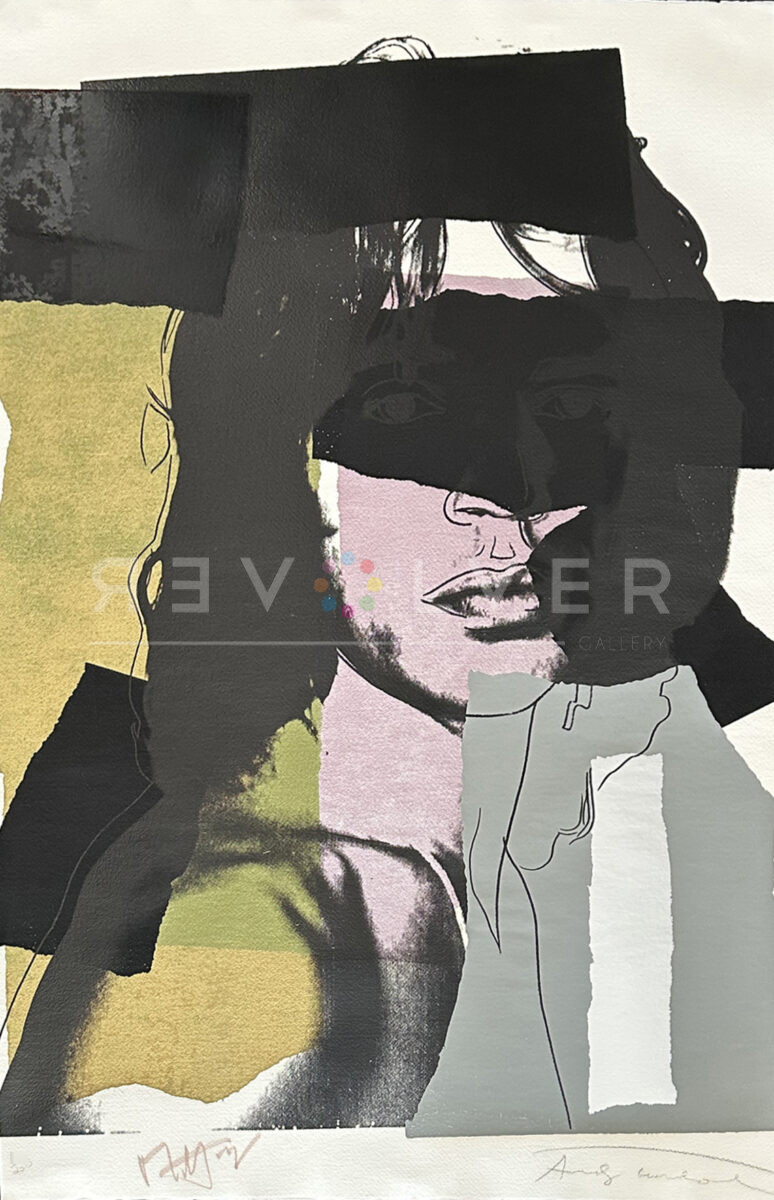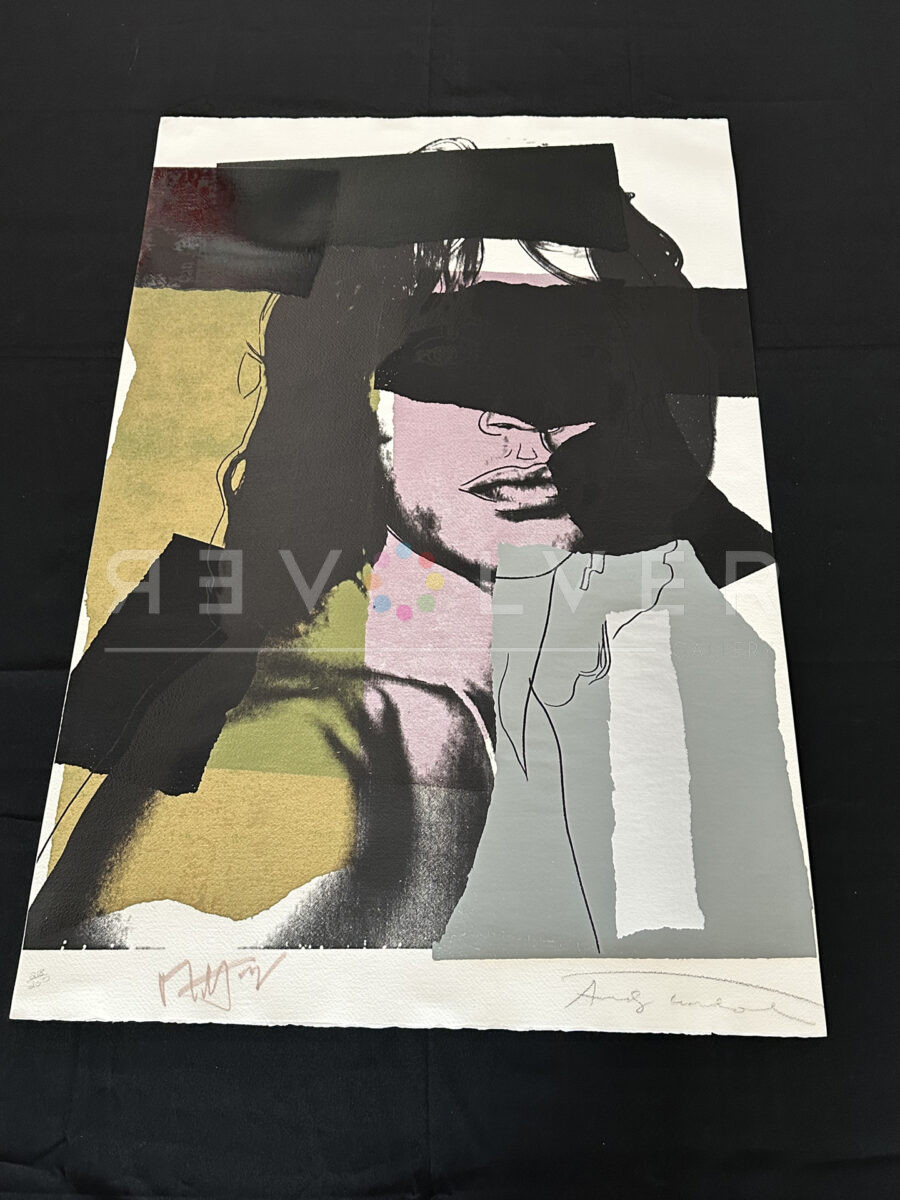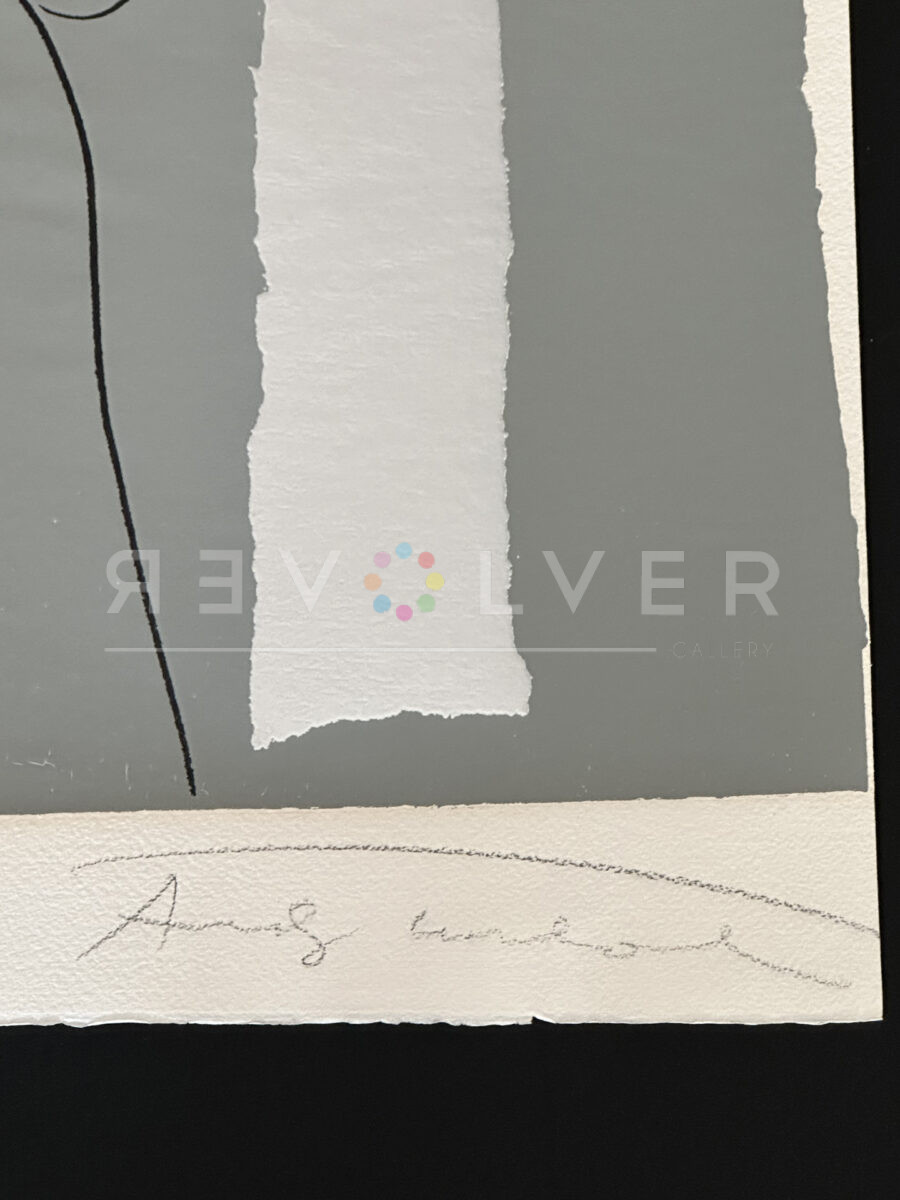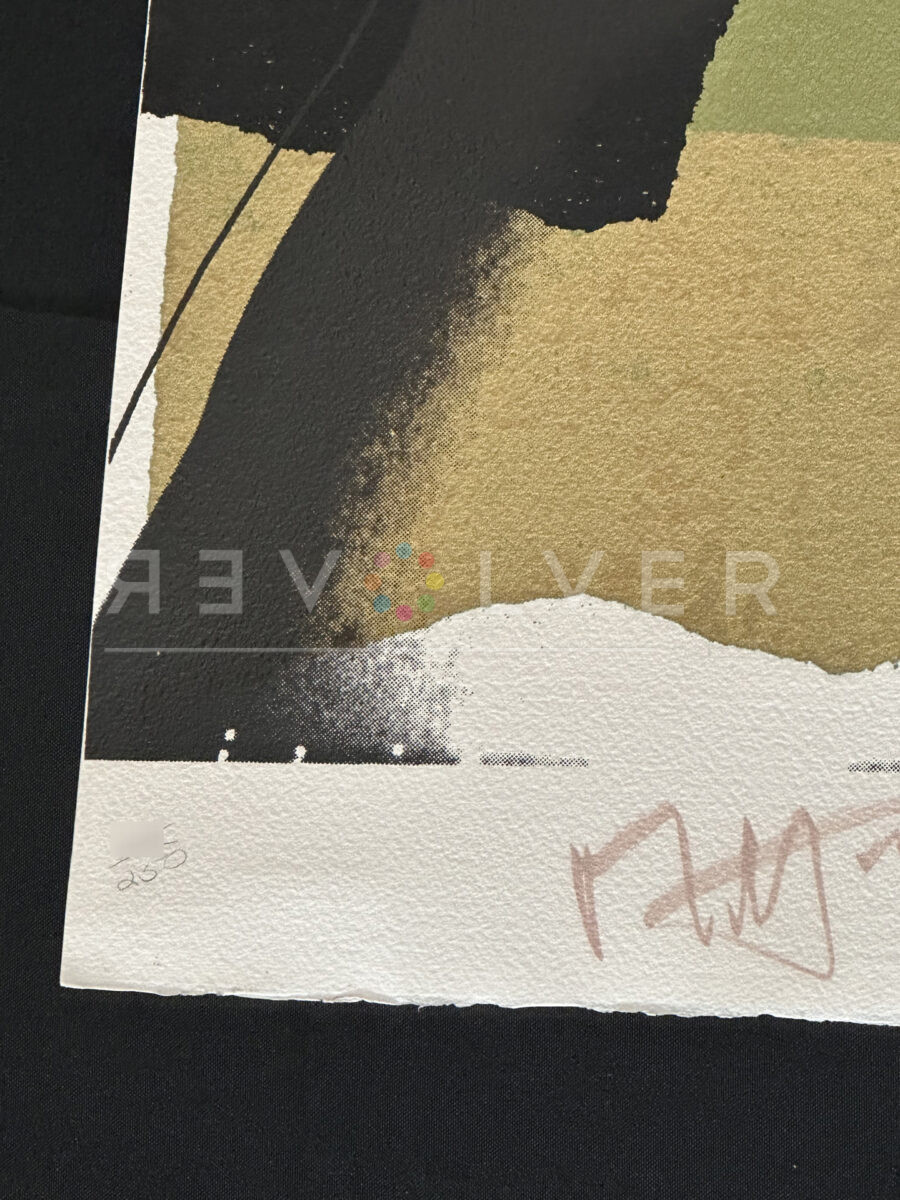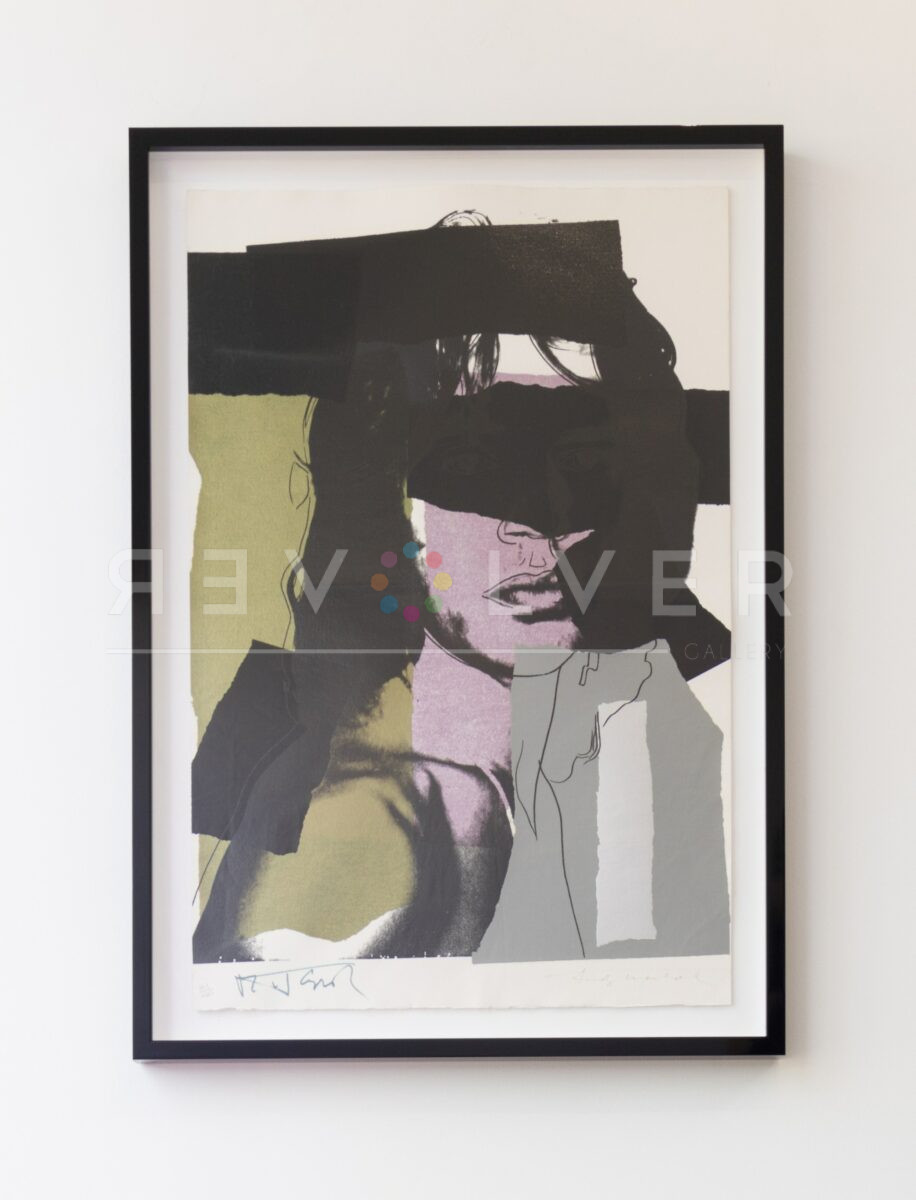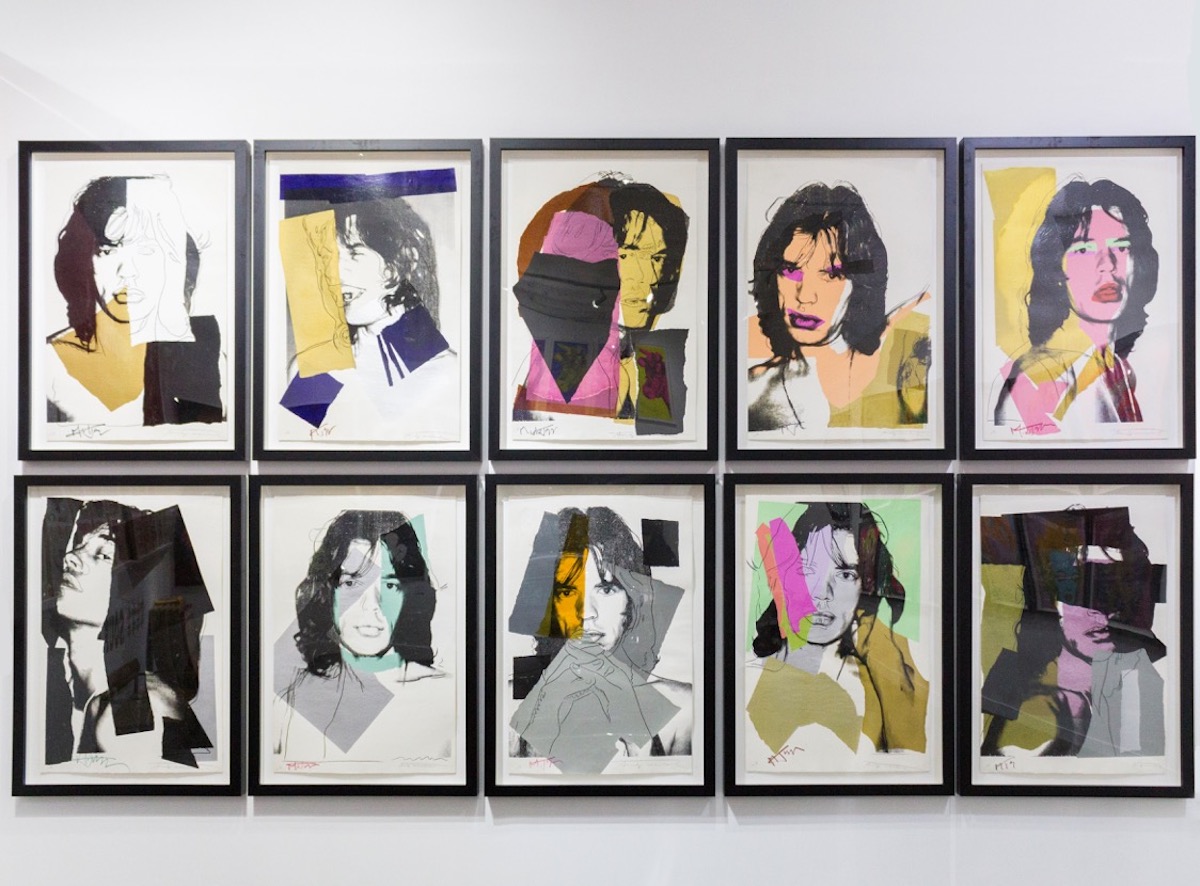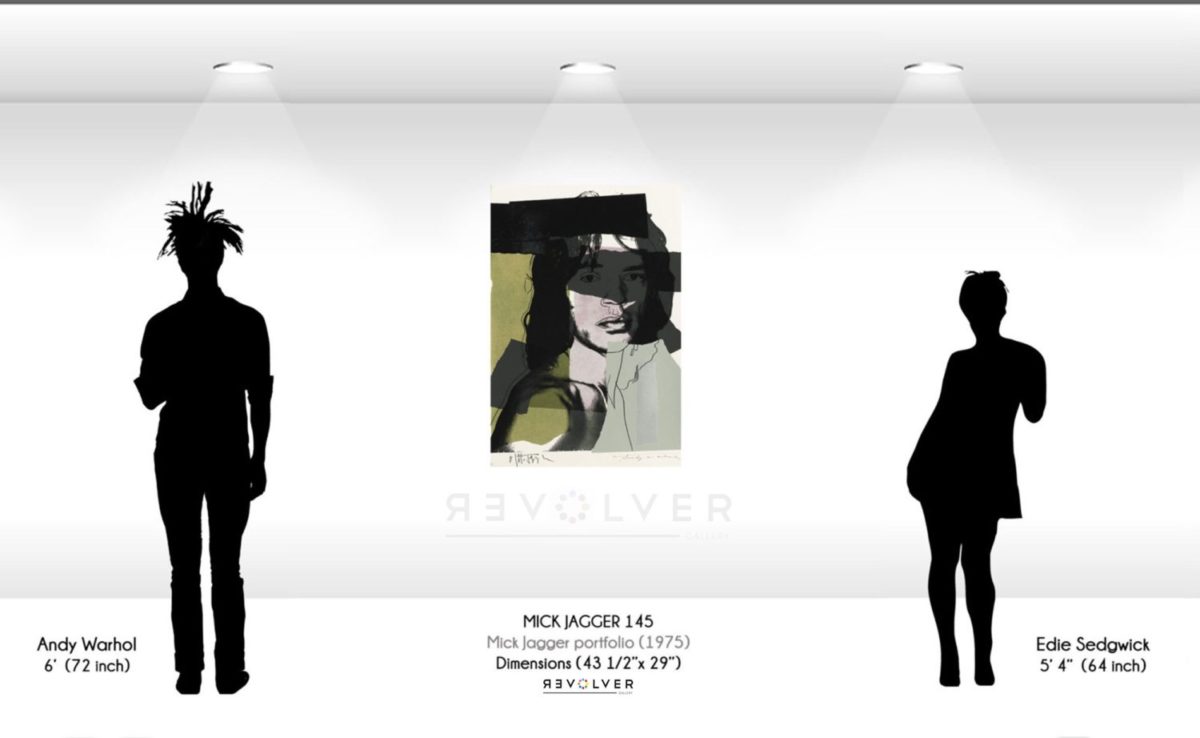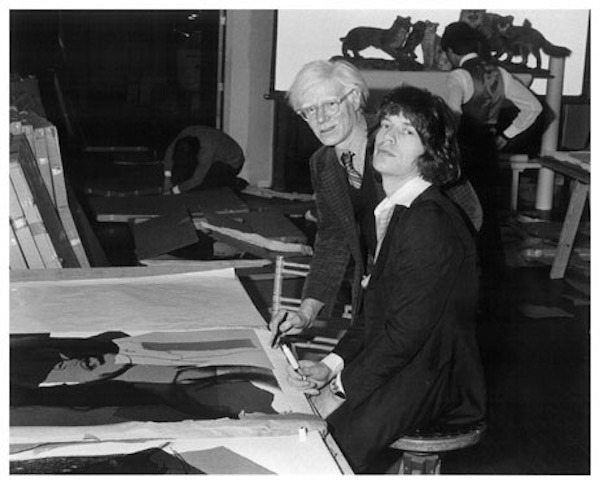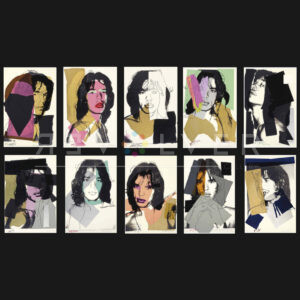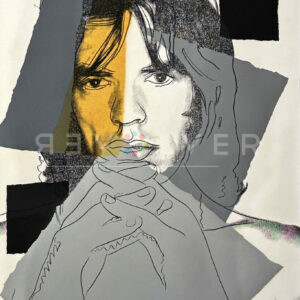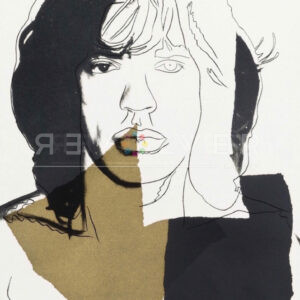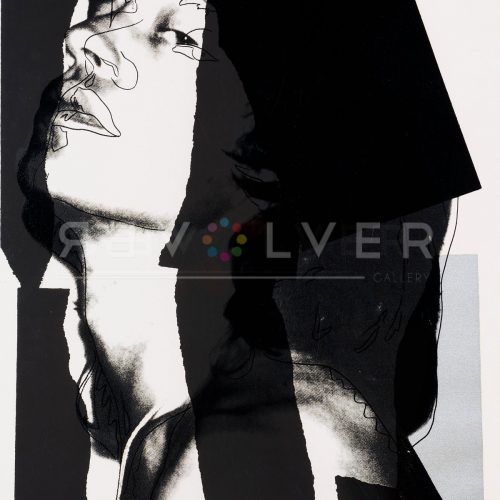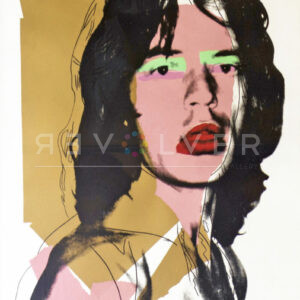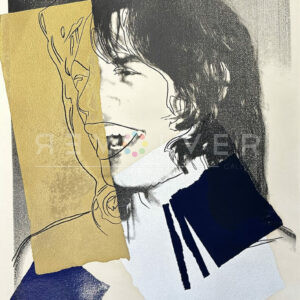Andy Warhol‘s Mick Jagger 145 is one of ten famous screenprints from the artist’s Mick Jagger portfolio. Each print reveals a different angle of the Rolling Stones frontman, and incorporates solid abstract shapes to emphasize various features. Mick Jagger 145 focuses on the singer’s famous lips, along with his bare upper torso and neck.
Warhol and Jagger met in 1964 at a party in New York during the Rolling Stones’ first US tour. Both parties had just begun their rise to fame. They became close friends and collaborated several times during their careers. In 1971, the Stones asked Warhol to design their album cover for Sticky Fingers. In a letter sent to Warhol, Jagger gave him total creative freedom with the design, asking him only to avoid complex designs which could delay the record’s release. Perhaps unsurprisingly, Warhol neglected this advice and created a controversial close-up image of a man’s crotch wearing tight jeans (that man on the cover is actor and Warhol superstar Joe Dallesandro) with a functional zipper. This erotic design was a daring but suitable fit for the rock star. He attained a sex symbol status, which is further explored in quasi-erotic prints similar to Mick Jagger 145.
Warhol understood Mick Jagger’s stylish image, declaring that he was “androgynous enough for almost anyone”. Warhol became great friends with Jagger’s wife, Bianca, as well, and even taught their daughter Jade how to paint. The images in this series are based on polaroids that Warhol took of Mick Jagger in his house in Long Island, where Jagger and his wife were vacationing. Andy seemed to obsess over Jagger’s “bad boy” image. He was able to emphasize the rock star’s charms through these photos, in which we glimpse the multifaceted regions of Jagger’s personality.
Many of Warhol’s series use a single picture and a more repetitive style, like in Marilyn Monroe and Mao. In this portfolio, however, Mick Jagger 145 is one of ten unique photos, as Andy recently began experimenting with his own photography as a means to create screenprints. This shift was partly due to the aftermath of Warhol’s Flowers series, when Patricia Caulfield sued him for appropriating her photography. As a consequence, Andy became more anxious about copyright laws, causing him to use his own photos more often. He started taking his polaroid camera everywhere he went, calling it his “date” to parties.
Warhol’s life quieted down after the rowdiness of the 1960’s Factory era. From the late 60s through the 1970s, he focused on art, photography, and entrepreneurial pursuits. He gathered many celebs for portraits during this period, such as Diana Ross, Muhammad Ali, and of course, Mick Jagger (to name a few). He went on to take portraits of all kinds of figures, including fellow artists Man Ray and Jean-Michel Basquiat. In 1969, Warhol founded his famed Interview magazine with the help of his trusty associate Gerard Malanga.
Mick Jagger 145 is undeniably Pop. However, in this portfolio, Warhol manifests a non-representational style which began emerging from his work in the 1970s. He uses blocks of color and pencil detailing to deliver an abstract, collage-like feel. This style would continue into his 1980s portfolios, evident in works such as Reigning Queens and Ten Portraits of Jews of the Twentieth Century.

